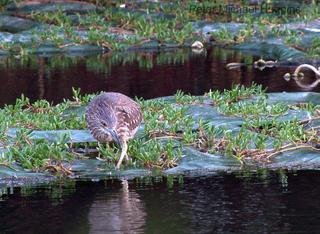 I was excited to learn that an historic canal runs near to our apartment at Ala Moana. It is called The Ala Wai Canal and was built in the 1920’s by Walter Dillingham’s Hawaiian Dredging Company. It is an impressive stretch of water which runs from Kapahulu Street, in the shadow of Diamond Head crater, along the back of Waikiki
I was excited to learn that an historic canal runs near to our apartment at Ala Moana. It is called The Ala Wai Canal and was built in the 1920’s by Walter Dillingham’s Hawaiian Dredging Company. It is an impressive stretch of water which runs from Kapahulu Street, in the shadow of Diamond Head crater, along the back of Waikiki district, until it joins the ocean near to Ala Moana, a walk of about four miles.
Water is an interesting topic in the State of Hawaii, where over 60,000 people rely directly on rainwater for most of their water needs. Honolulu is served by groundwater wells sunk into volcanic rock in the mountainous ribs of the island, sole-source aquifers which contain minimal contamination from agricultural and industrial runoff. However groundwater in the valleys contain the highest concentrations of Bromacil (a pesticide) in the whole of the United States, and stream flow carries this and other contaminants, as well as silt, into the Ala Wai Canal.
Exploring the area, I saw lots of familiar things associated with canals I have seen in Europe, including a variety of the common Mallard. However this is not a canal in the sense that The Grand Union or the Kennet and Avon is a canal. The Ala Wai was built to drain the lowlands around Waikiki, not as a mode of transportation, and it is therefore much wider than British canals, it is also completely straight, and there is no sense at all of it being a natural feature of the island.
The native Hawaiian nobles had traditionally used the area to grow taro, and to farm fish in pools built of lava rock. The canal was dug by the Americans to drain these lowland swamps, allowing intensive settlement of the area around Waikiki. It appears that the same company that dug the canal also had several laws passed requiring local landowners to use landfill. The Hawaiians were persuaded that the canal would reduce the number of mosquitoes in the area, but it is clear that its construction was an act of colonialism, not environmentalism. The offshore reef is being damaged by the effluent from the canal, and a new breed of unnaturally large mantis shrimp was recently found inhabiting it.
Despite the impurities in the water, bird and plant life does survive along the edge of the canal. I saw plovers, herons, ducks, and cardinals, whom share the paths and boulevards by the water with quite a number of homeless or down-and-out folk. Hawaii’s homeless happen to suffer less with the weather than those I have known in England, but I understand that they have less assistance from the state. They come here to the canal, like I do, because it is a haven from the city streets.
 This forgotten part of Honolulu is isolated from the traffic and from the tourists and like canals in England, feels very peaceful. Just as in England when you approach a bridge from the towpath, you are often led onto a road and the peace is disturbed by the rush of everyday life. Suddenly there is no public right of way, or you are forced to wait for a huge line of traffic to pass, and getting back down to the canal is badly sign-posted. Along the edge of the canal itself are the backs of allotments, schools, and golf courses. There are few bridges over the canal, and it must be a pain for locals whom must drive around.
This forgotten part of Honolulu is isolated from the traffic and from the tourists and like canals in England, feels very peaceful. Just as in England when you approach a bridge from the towpath, you are often led onto a road and the peace is disturbed by the rush of everyday life. Suddenly there is no public right of way, or you are forced to wait for a huge line of traffic to pass, and getting back down to the canal is badly sign-posted. Along the edge of the canal itself are the backs of allotments, schools, and golf courses. There are few bridges over the canal, and it must be a pain for locals whom must drive around.
All this made me realise how few citizens of Hawaii know the canal as anything more than a drainage ditch. It is amazing to me, how just six feet the other side of that wall, exists another world. It is notable that the only citizens enjoying it, bar the odd runner and the outrigger canoe clubs, are the poorest and most vulnerable ones.
 I was excited to learn that an historic canal runs near to our apartment at Ala Moana. It is called The Ala Wai Canal and was built in the 1920’s by Walter Dillingham’s Hawaiian Dredging Company. It is an impressive stretch of water which runs from
I was excited to learn that an historic canal runs near to our apartment at Ala Moana. It is called The Ala Wai Canal and was built in the 1920’s by Walter Dillingham’s Hawaiian Dredging Company. It is an impressive stretch of water which runs from  This forgotten part of
This forgotten part of 
0 Comments:
Post a Comment
<< Home